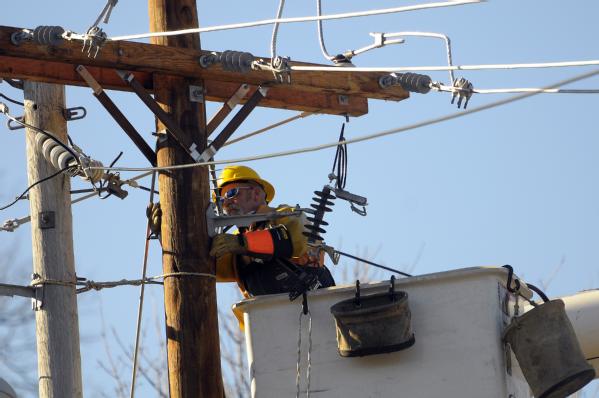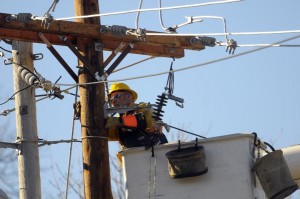
Fragile Electricity Grid a National Security Concern
 The high winds from the recent “Derecho” storm knocked down trees, utility poles and power lines, leaving an estimated 3 million people without power in the Washington DC metro area. The emergency response, to say the least, was inadequate. Millions of people were left without power for several days, during a sweltering heat wave. Schools and businesses closed. Several people lost their lives in the last week and a half, both from the storm itself, and from heat-related illness. Maryland, Virginia, Ohio, West Virginia, and Washington DC announced a state of emergency.
The high winds from the recent “Derecho” storm knocked down trees, utility poles and power lines, leaving an estimated 3 million people without power in the Washington DC metro area. The emergency response, to say the least, was inadequate. Millions of people were left without power for several days, during a sweltering heat wave. Schools and businesses closed. Several people lost their lives in the last week and a half, both from the storm itself, and from heat-related illness. Maryland, Virginia, Ohio, West Virginia, and Washington DC announced a state of emergency.
The recent disaster highlights the fragility of our nation’s electricity grid. How could it take nearly a week to restore power to tens of thousands of people and businesses? The reason is that our electric grid is aging, under stress, and suffers from chronic underinvestment.
Underinvestment leads to aging infrastructure, which is already suffering from bottlenecks and congestion. The American Society of Civil Engineers (ASCE ) estimates that 70% of the nation’s transmission lines and transformers are more than 25 years old, leaving the grid vulnerable to outages. When power is cut off, businesses can’t open, factories shut down, and the economy takes a hit. Unplanned interruptions will cost the U.S. economy $6 billion in 2012, which is expected to rise to $71 billion by 2020 if investments aren’t made. ASCE estimates that the electric power industry would need to increase investment by $11 billion annually until 2020 to make the grid reliable.
The fragility of the grid presents a national security threat to the United States. The recent storm saw threats as ordinary as high winds and trees cripple the nation’s capital. With decades old infrastructure, we are not adequately equipped to handle extreme weather events, let alone greater threats such as coordinated cyber attacks on the electricity grid.
Not only have utilities devoted precious little to maintenance, but investment in innovation has been woefully lacking. Investment in R&D for the electric power sector has steadily declined over the past few decades. According to IEEE Spectrum, from 2001 to 2006 utilities dedicated a measly 0.17% of their revenue to R&D, a smaller share than the hotel industry.
It is imperative, therefore, that we make the needed investments. For maintenance, low-tech measures like tree cutting and burying power lines could go a long way. But, to bring our grid into the 21st Century, larger investments to accelerate “smart grid” technology are needed. This would allow utilities to instantly be informed of outages and better reroute power to alleviate congestion. As it stands, utilities only discover power outages when customers call to complain.
Moreover, strengthening the grid will have the side benefit of facilitating a build out of renewable energy capacity. As our electric generation capacity shifts to cleaner sources of energy – wind and solar – a more sophisticated transmission network is needed to balance variable energy supplies. By connecting together different geographic areas through transmission lines, a greater pool of electricity can be drawn upon, allowing for a loss of power in one area to be offset by generation in another.
In an era of budget austerity, surely officialdom will scoff at the price tag, but when every $1 invested avoids more than $1 in economic losses, we cannot afford not to. Ordinary maintenance of the nation’s electric power assets has long been underfunded. The silver lining in having millions of people without power during a heat wave is that maybe we will finally realize the consequences of such neglect.






[…] ASP blog post published last year highlighted the vulnerability of America’s current power grid structure, one […]